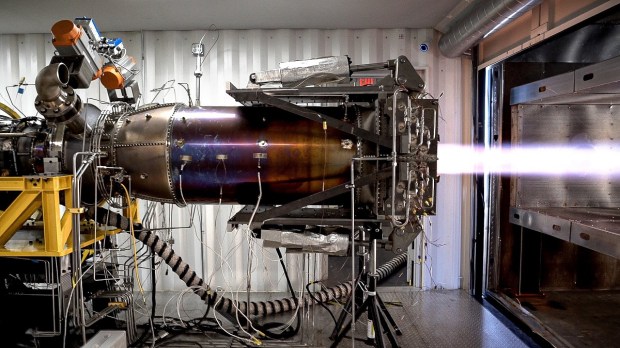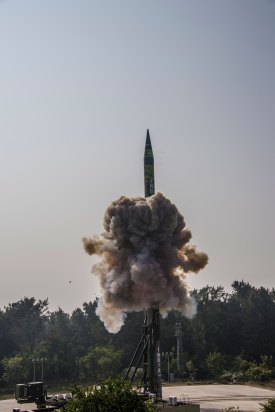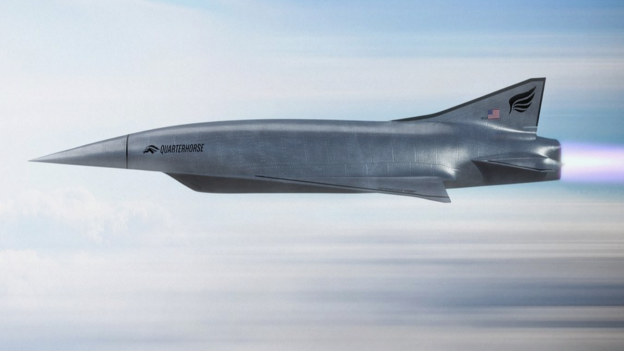The staggering breakthrough in aviation is making entry into the era of hypersonic flight. For India, the time has come to break the hypersonic barriers for the ongoing and futuristic systems and weapons. How is it unfolding?
Hypersonic flight is the perceived future of human aviation. The staggering breakthrough in aviation is making entry into the era of hypersonic flight.
Hypersonic is defined to be above Mach 5 (five times the speed of sound), while supersonic is merely above Mach 1. The thrust for hypersonic systems is now entrenched into the strategic plan in which aerospace companies have started to deliver the combat jet and hypersonic weapons planes to the armed forces.
Why is it so important today? It does not have any counter mechanism as the hypersonic missiles are impossible to intercept as no credible technology — anti-missile systems– has been developed yet. While the hi-calibre radar can detect hypersonic vehicles—such as missile systems– only when the missiles are about to hit their intended target. In the ongoing war with Ukraine, Russia has fired its Kinzhal systems which demonstrated its capability. The hypersonic systems simply have no match for the tactical target within the Observe–Orient–Decide–Act loop as the speed is the new stealth.
Hypersonic breakthroughs
The whole concept of air dominance is now shifted more towards technological advancement based on subsonic speed, stealth and beyond; this prioritizes next generation technological assimilation over the numbers in terms of efficacy and overall strategic roles.
For example, the US air force’s SR-71 has been at the pinnacle of aviation speed for nearly half a century. The quest for such hypersonic platforms requires aerospace engineers to develop hybrid engines capable of handling subsonic, supersonic, and hypersonic speeds.
However, in this case, the propulsion needs to be recalibrated greatly between the supersonic and hypersonic regimes, with air-breathing, or ramjet designs more popular for increased speeds. And the development is already taking place in the aerospace clusters of advanced militaries, largely led by the US, alongside Russia and China. However, the recent development in China has raised debate if the hypersonic tech is still dominated by the US with the launch of the Chinese Fractional Orbital Bombardment System (FOBS). As the FOBS– The hypersonic glide vehicle – loaded with warhead was tested in low-earth orbit as it circled the globe, re-entered the atmosphere and hit the target.
The advancement is based on the seamless transition between turbojet, ramjet, and back to turbojet.
In 2021, the US Air Force awarded Hermeus a $60 million contract to develop three uncrewed concept aircraft, including the hypersonic “Quarterhorse.” In fact, in 2022, Hermeus achieved a major milestone by successfully firing a turbojet-ramjet hybrid engine called — Chimera. The goal of Quarterhorse is to validate Chimera engine in-flight and touch Mach 4+ speeds – breaking the nearly 50-year-old airspeed record held by the legendary SR-71.

The most critical is the sheer complexity of the transition from turbojet mode to ramjet mode in quick succession. In this case, a ramjet, which operates at high speeds, pressurizes air and fuel in the combustion chamber. Such intakes push the aircraft to Mach 5 and beyond. The breakthrough in Quarterhorse is paving way for the new generation of jets.
India’s hypersonic projects
The Defence Research and Development Organization (DRDO) has been working on hypersonic missiles since 2018.
In 2020, the Defence Research and Development Organisation (DRDO) tested the hypersonic air-breathing scramjet system for propulsion, called the Hypersonic Technology Demonstration Vehicle or HSTDV. According to a defence official, the HSTDV attained a speed of Mach 6 for 23 seconds during the testing. Here, India successfully tested the scramjet-powered HSTDV.

“India gets the upper hand,” said a DRDO scientist. “The advantage is all about the speed as these are almost impossible to detect and gauge trajectory because they have the capability to maintain high speeds (Mach 6-10) at low altitudes while also being highly manoeuvrable,” said the DRDO scientist.
Taking further cue from the recent Agni-5 missile test that doesn’t seem to be a standard ballistic missile test. The tests broke away from the usual path of ballistics tests with the low velocity of the missile which indicates its quasi-ballistic role, which is usually depicted by a Hypersonic Glide Vehicle rather than a standard nuclear missile launch.
The Agni-5 provides ample scope of the hypersonic air-breathing scramjet technology since the DRDO has already successfully tested the flight of the HSTDV.
The test has validated the scramjet propulsion technology for the ignition and sustained combustion at hypersonic air flows using atmospheric oxygen. It also validates the critical phase of separation between the booster and hypersonic flight.
In line, BrahMos Aerospace Corporation has also put forward the feasibility of such a missile. In fact, BrahMos Aerospace has shown a willingness to undertake such an initiative should the government of India (GOI) accept the acceptance of necessity (AoN). As reports indicate such initiatives are already underway as the GOI intends to induct it into the armed forces within five years.
However, the major challenge remains in terms of communications and connectivity at hypersonic speed over Mach 5. This is crucial as the military gears up for the induction in the near future. “The DRDO must validate the target acquisition capability, missile guidance and control mechanisms,” said a senior military commander of the Indian army.
The development of hypersonic weapons has already been established as early as the 1950s with intercontinental ballistic missiles flying at speeds of Mach 25. China has already marked it under its major programme on hypersonic weapons with higher determination than ever before. For India, the time has come to break the hypersonic barriers for the ongoing and futuristic systems and weapons.
https://www.financialexpress.com/business/defence-indias-quest-for-hypersonic-capability-amid-global-tech-breakthrough-3055587/





